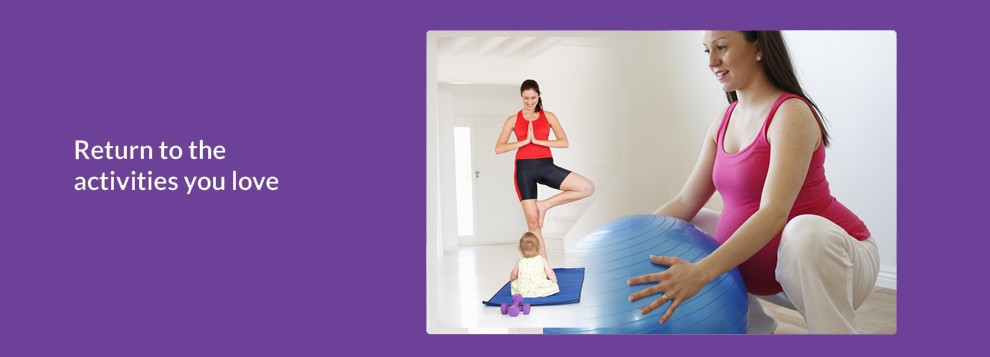What is diastasis recti?
Diastasis recti (DR) is a separation between the right and left side of the rectus abdominis muscle. This muscle extends from the cartilages of ribs 5-7 and the xiphoid process of the sternum to the pubic bones. These muscles are very important in proper stabilization, breathing and moving of the body. Diastasis recti develops with forceful movements of the abdominals (i.e during sit ups and crunches) and during pregnancy as a result of the increase strain and stretch of the abdominal muscles (9). While most abdomens accommodate this stretch very well, others can be extensively damaged; a condition common in pregnancy (2,11).
What are the risk factors for diastasis recti:
- Multiparity (2 or more pregnancies)
- Multiples (twins, triplets, etc..)
- Petite women
- Pronounced sway back
- Poor abdominal muscle tone
- Protruding abdomen
- Obesity
- Hard core weightlifting
- Crunches, sit-ups, pilates
- Poor mechanics during lifting or exercise
- Genetics
Testing for Diastasis Recti
A study done by Beer et al (2009) measured the width of a normal, healthy linea alba: the connective tissue that connects the left and right rectus abdominis. Using diagnostic ultrasound imaging the study concluded that the mean width of the linea alba was 7mm ± 5mm at the xyphoid; 13mm ± 7mm, 3cm above the umbilicus; and 8mm ± 6mm, 2cm below the umbilicus. A DR can be reliably measured with ultrasound imaging when the width of the linea alba exceeds these lengths (4,5). To find out more about testing for diastasis recti, please click here.
Diastasis recti decreases core strength and can lead to back pain, pelvic pain and organ prolapse (5). So get your tummy flat and strengthen your core while you protect your neck and back from injury. You can get assessed by a Toronto physiotherapist with extensive experience in treating diastasis recti here at PhysioExcellence.
Taking inspiration from Julie Weibe, Shirley Sahrmann, Dr. Stewart McGill, Diane Lee and Julie Tupler, just to name a few, Julia Di Paolo Reg PT has developed a specific rehabilitation program for diastasis recti. She has worked with Andrea Page of Fitmom Canada, Beth Beauchemin of Fit Family-Belly Bootcamp, and Samantha Montpetit-Huynh of Core Expectations developing customized programs for clients with diastasis recti.
Did you know your treatment for diastasis recti could be covered under your work insurance extended health benefits?
Physiotherapy is covered under most extended health benefit programs from your work insurance. Call or email us to find out more!
How often do I need to come in for treatment?
Every case is different. At PhysioExcellence we do not use a recipe approach. During your initial assessment, the severity of your DR will be determined and a treatment plan will be customized for you in order to optimize your recovery. Obviously the larger the diastasis recti and the weaker the linea alba, the longer the recovery prognosis is. Other factors that might influence your frequency of treatment are further concerns such as neck or back pain, pelvic organ prolapse, repetitive strain or other injuries. However, our ultimate goal is to guide you back to pain free living as quickly as possible!
After your assessment with our physiotherapist, you can also choose to work with our personal trainer who can motivate you daily, weekly or at your pace to ensure the best results.







